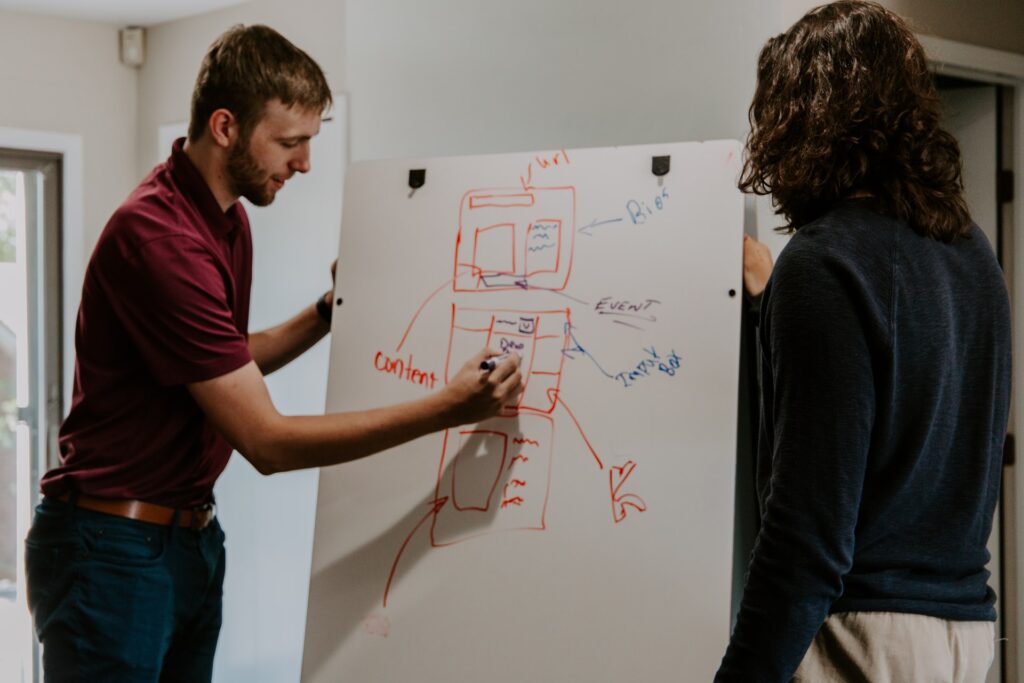As a web designer, you might tend to think that your work speaks for itself. The truth is that the ability to communicate your ideas and present them clearly and engagingly is one of the most important skills a web designer could have.
This is especially true in the current professional climate, where face to face meetings and brainstorming sessions have been reduced to a minimum. Most of the work-related talk is being done via video conferencing software and apps. This creates an additional need to be able to present your ideas in a concise and transparent manner.
Design is a client-oriented service

Any line of work that includes providing a service to a client demands communication between the two sides involved in the process. Web design is no exception to this rule.
Rarely, you might get a project with no back and forth between you and the customer. For a web designer, coding and creativity are a part of everyday work, and so is communication.
Clients are more familiar with their business than you are
Any site that you are working on is being created for a specific business and with a particular goal in mind. A capable business owner will know more about their area of work than you.
They’ll know who their target audience is, and what would draw that audience to visit their website. They (should) know the details of their business that need to be communicated on the website to visitors. Using effective communication, you can work with the client to create a website that achieves its goals.
Customers don’t know what you are talking about

Just like there is no way for you to know the specifics of every business you come into contact with, the opposite is also true. Odds are, your customers won’t be familiar with the technical jargon and industry language that is second nature to you, bare a few exceptions.
To ensure that your clients better grasp what you are doing and why, you must know how to communicate effectively and clearly. After all, they’re coming to you to get the work done, so most likely they won’t know that much about the subject.
You depend on each other
Communication is a two-way street. As a designer, you will rely on your clients to provide you with the initial idea and continuous feedback throughout the designing process.
As for the client, they depend on your skills to create an attractive and useful website. Since there is mutual dependence, communication is necessary to bridge the gap and develop satisfactory results for both parties.
Good communication makes clients less likely to worry
Every once in a while, remember to check in with clients and communicate throughout the process. This will make them confident that you are making progress and that they’re important to you.
If they don’t hear much from you, some clients will wonder if things are still on the right track. You can keep those clients satisfied by keeping them up-to-date with the progress and getting their feedback throughout.
Getting new clients is easier if you know how to present your ideas
All of the advice given above is valid if, and only if, you do land a client. Keep in mind, though, that clients tend to shop around and search for the designer that best suits their needs. Clear communication can play a crucial role in attracting new customers.
If you can present your vision in a clear and attractive way, potential customers will be more likely to choose you over someone else who cannot express their ideas as concisely as you do.
What your presentation should include

Now that you are well aware of the importance of presenting your ideas in a way that is easy to approach and understand, let’s take a look at some of the critical aspects of a successful presentation.
- Explain the hows, the whats, and the whys – How does a specific feature work? Why is it the way it is? What do you intend the user to do? Why should the customer care? What is your next step? You should have answers to all these questions during a creative process, and the answers to those questions should be presented to the client. Remember, a customer who is well informed is a satisfied customer.
- Show how things work – All the theorizing and explanation in the world is no match to a simple factual presentation. Show the client what happens if they follow a specific link, or if they tap a button, or if they hover over an image, etc. Show the flow and demonstrate how things work together.
- Remember that the end-user is the ultimate customer. This means that, even though it is essential that your customer is satisfied with the way the site works and acts, they do not get to make the final call. You should always make the users’ satisfaction your top priority. Be sure to get this message across to your clients and help them see why this is important.
- Use the tips and tricks that work in all forms of communication. Have a clear plan of what you’re going to say. Rehearse if you must. Remember to smile and make eye contact. Refer to the customer by their first name. Be confident in the matter you are presenting and avoid disqualifying statements (that is, always say “it will” rather than “it may.”) Show excitement; it can be contagious.
A few final words
Clients will trust you and believe in what you create if you’re confident, clearly understand the problem, and are able to articulate solutions. Remember that being a genuine, positive person that your client feels comfortable with matters a lot.
While this article offers some solid advice to get you started, consider joining one of the various open presentation workshops that are available online. Communication is a valuable skill, both online and in the real world, and the better you are at it, the easier it will be for you to grow as a person and as a professional.
Leave a Reply